How to Store Loose Leaf Tea
To maintain the quality and flavor of your loose leaf tea, proper storage is essential. Adhering to a few basic guidelines can keep your tea fresh for longer.
Containers: Store your tea in airtight containers. Materials like glass, tin, or ceramic with a non-reactive interior are ideal. This helps prevent moisture and air, which can degrade the tea.
Location: Choose a cool, dark place for your tea storage. Heat, light, and moisture are enemies of tea, causing it to lose flavor and aroma. Avoid placing your tea near stoves, heaters, or in direct sunlight.
Bestsellers
Avoid Odors: Tea is highly absorbent and can take on flavors and odors from its environment. Keep it away from spices, coffee, or any strong-smelling items.
Here’s a quick reference table for ideal storage conditions:
| Factor | Ideal Condition |
|---|---|
| Container | Airtight, opaque |
| Material | Glass, Tin, Ceramic |
| Location | Cool, dark place |
| Temperature | Room temperature |
| Away from | Heat, light, moisture |
| Prevent | Absorbing odors |
Following these guidelines ensures that your loose leaf tea remains as fresh and flavorful as the day you bought it.
Selecting the Right Container
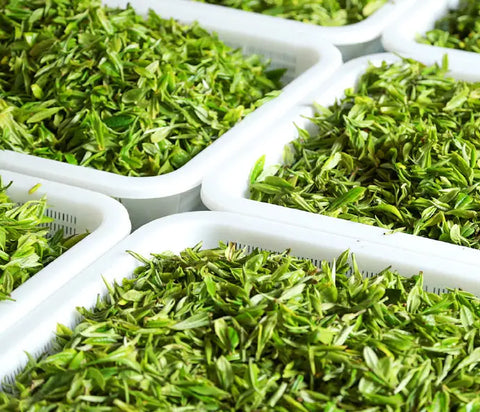
When storing loose leaf tea, using the proper container is crucial to maintain freshness and flavor.
Criteria for Ideal Tea Containers
Airtight Seal: Your tea container should have an airtight seal to prevent exposure to air, which can degrade the tea quality.
Opaque Material: Exposure to light can damage tea leaves. Choose a container that blocks out light to preserve the tea's potency.
Non-reactive Materials: Look for containers made from materials like glass, ceramic, or tin. These won't interact with the tea leaves or impart unwanted flavors.
Proper Size: Size is important. A container too large will have too much air, whereas a too-small container may crimp or crush your tea leaves. Select one that fits the quantity of your tea leaves snugly without squashing them.
Types of Tea Storage Containers
Tin Containers:
- Pros: Durable and often come with tight-fitting lids.
- Cons: Can be prone to rust if not cared for properly.
Ceramic Jars:
- Pros: Good for keeping out light and often have airtight seals.
- Cons: Can be heavy and breakable.
Glass Containers with Tint:
Lao Ban Zhang
- Pros: Visually appealing and won't react with tea leaves.
- Cons: Requires that they be kept in dark spaces to avoid light exposure.
Plastic Containers:
- Pros: Lightweight and shatter-resistant.
- Cons: Can retain odors and stains, potentially affecting the tea's flavor.
Choosing the Storage Location
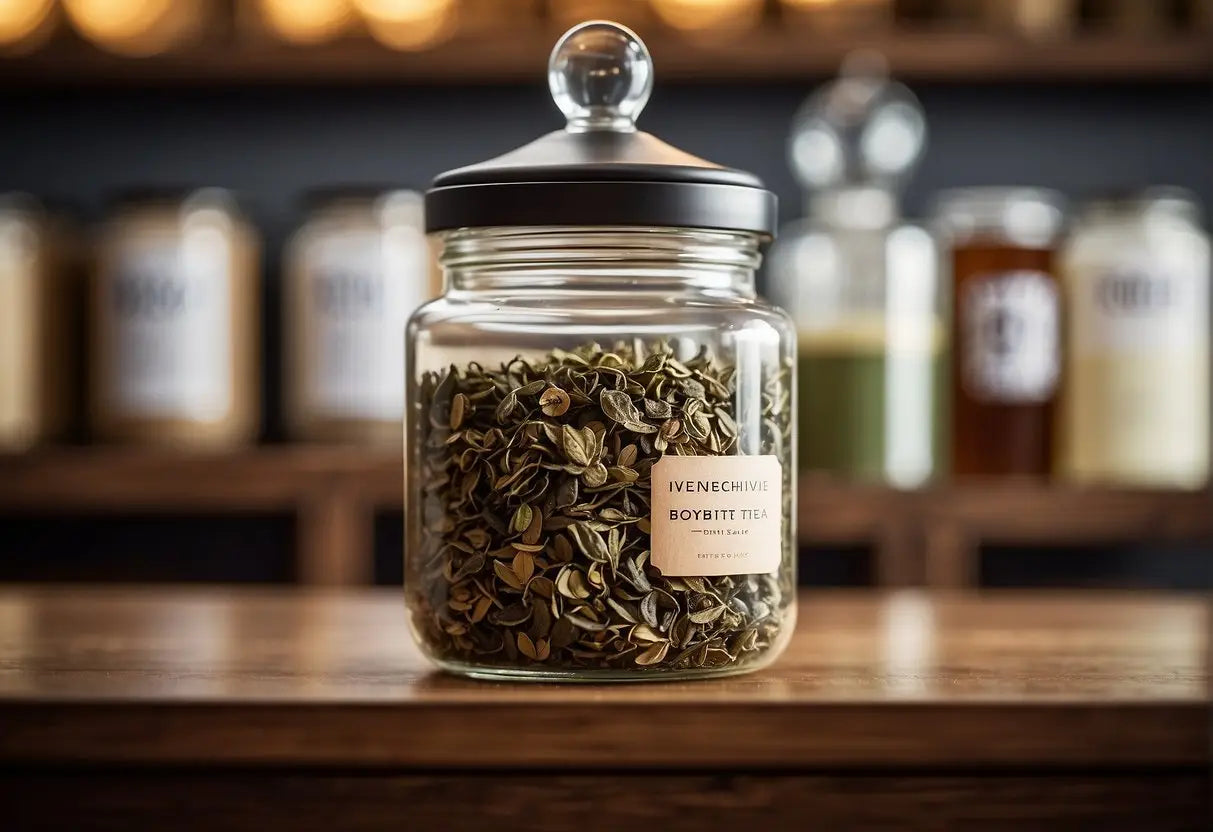
Selecting the right location for your loose leaf tea is crucial for preserving its freshness and flavor profile. Pay attention to environmental factors and aim for conditions that prevent degradation.
Factors Affecting Storage Location
- Temperature: Store your tea away from heat sources. Fluctuating or high temperatures can hasten the degradation of your tea's quality.
- Light: Exposure to light, especially sunlight, can degrade the quality of loose leaf tea. Choose a location that is dark.
- Odors: Tea can absorb odors, so select a place away from strong smells to maintain its intended flavor.
- Humidity: High humidity can ruin loose leaf tea by introducing moisture, which leads to mold. Ensure the location is dry.
Ideal Storage Conditions
- Consistent Temperature: Aim for a cool area with a stable temperature, preferably between 60-75°F (15-24°C).
- Darkness: Opt for a cabinet, pantry, or drawer that is not exposed to light.
- Neutral Smells: Ensure your storage area doesn't contain strong odors that could be absorbed by the tea.
- Dry Environment: Use an area with low humidity or include desiccants if necessary to keep moisture at bay.
Controlling External Factors
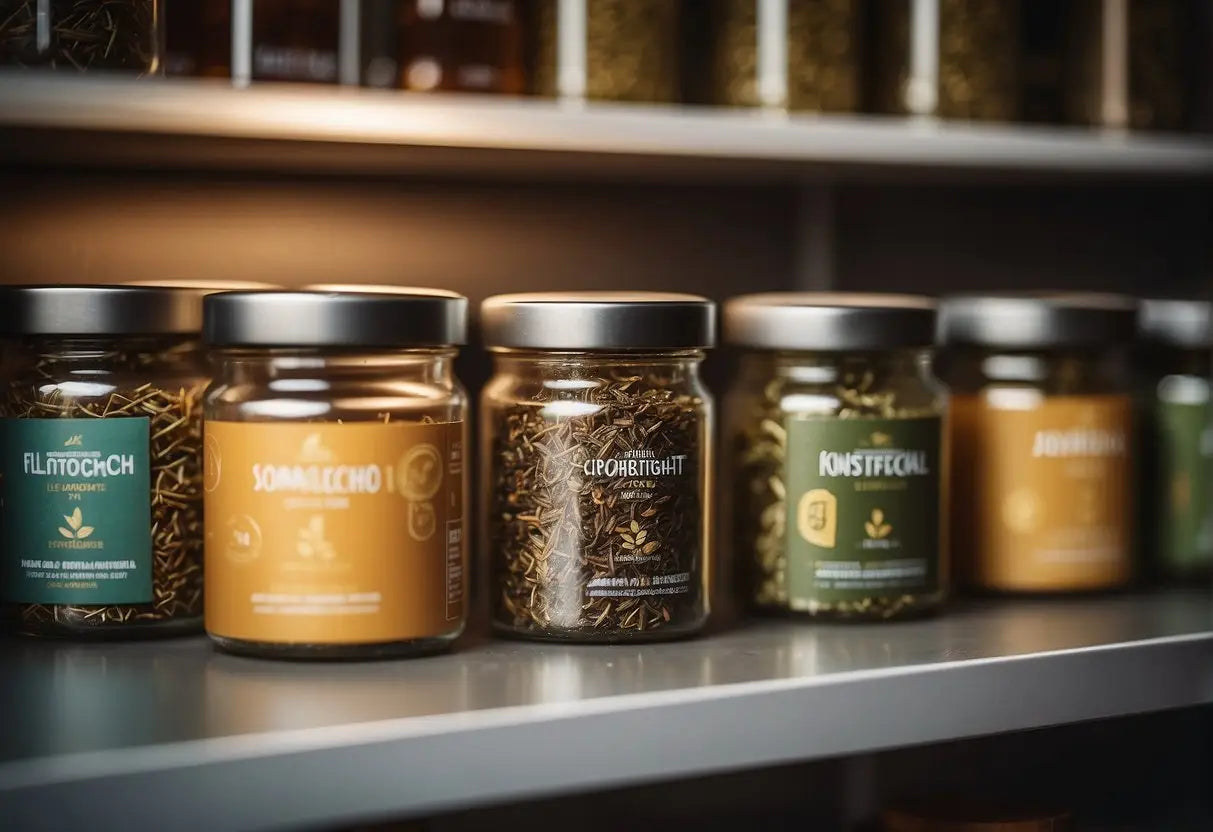
Properly controlling external factors is crucial in preserving the quality and freshness of your loose leaf tea. These factors include light, humidity, odors, and temperature.
Protecting from Light
Direct sunlight can degrade the quality of your tea by promoting oxidation. Store your tea in opaque containers or in a dark location to shield it from light. A cabinet or pantry is ideal, as long as it doesn't receive direct sunlight.
Maintaining Proper Humidity
Your tea's flavor can be compromised in overly humid conditions. Use airtight containers to store your tea, preventing moisture from seeping in. Silica gel packets can be added as a desiccant to absorb any excess moisture.
Avoiding Strong Odors
Loose leaf tea can absorb surrounding odors, which can alter its intended flavor profile. Ensure you store your tea away from spices, cooking areas, or any place with strong smells. Containers with a tight seal will prevent odor contamination.
Temperature Considerations
Extremes in temperature can accelerate tea deterioration. Your tea should be stored in a cool and stable environment, ideally between 60-75°F (15-24°C). Avoid placing it near heat sources such as stoves, ovens, or radiators.
Organizing Your Tea Collection
When approaching the organization of your loose-leaf tea collection, consider both functionality and preservation. Use the following strategies to maintain freshness and accessibility:
Choose the Right Containers: Protect your teas from air, moisture, and light. Opt for airtight tins or opaque jars, which can be labeled clearly with the following information:
- Name of the tea
- Date of purchase
- Expiration date
Create a Cataloguing System: To quickly find your preferred tea, arrange your containers systematically. You could sort them:
- By type (green, black, herbal, etc.)
- By flavor profile (fruity, spicy, earthy, etc.)
- Alphabetically
Maintain a Tea Ledger: Keep a small notebook or digital document for detailed notes, including:
- Tea origin
- Brewing times and temperatures
- Personal tasting notes
Purge Regularly: Regularly check expiration dates and discard teas that are past their prime to ensure quality.
Storage Location: Select a cool, dry place away from strong odors or heat sources. Kitchen cabinets away from the stove or a dedicated tea chest are ideal locations.
By adhering to these tips, you'll enjoy a well-maintained tea collection that remains fresh and flavorful, ready for your next perfect cup.
Long-Term Storage Tips
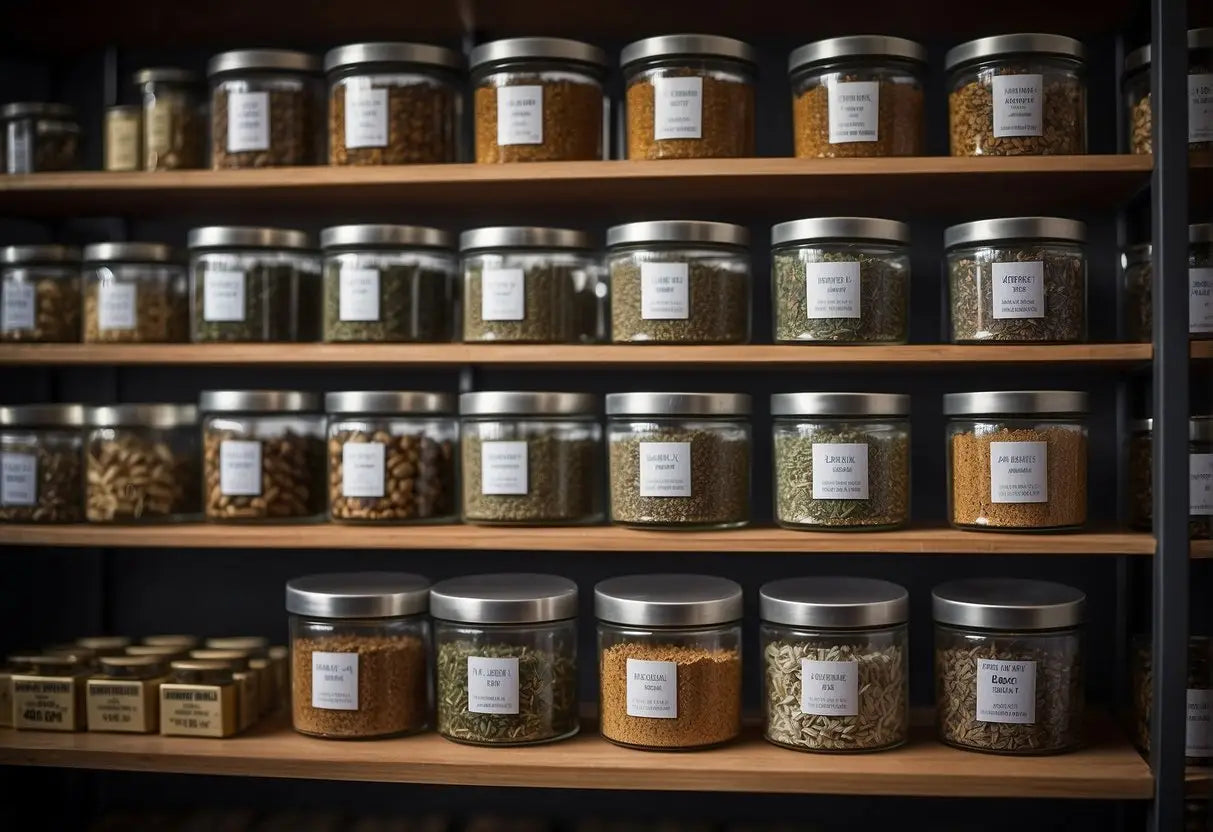
When storing loose leaf tea for an extended period, maintaining its freshness and flavor is crucial. Here’s how you can best achieve that:
Choose the Right Container: Store your tea in an airtight container to prevent exposure to air, which can cause oxidation and diminish flavor. Materials like tin or dark glass are preferable, as they block light which can also degrade the quality of the tea.
Avoid Moisture and Heat: Your tea should be kept in a cool, dry place. Moisture can lead to mold growth and heat can alter the delicate flavors of the leaves. A pantry or kitchen cabinet, away from the stove and not susceptible to temperature fluctuations, is ideal.
Keep It Isolated: Tea leaves can absorb odors, so store them separate from spices, coffee, or anything with a strong scent. Ensuring separation will maintain the tea’s original aroma and taste profiles.
Label with Date: Use a label to mark the purchase or packaging date on your container. Most teas are best enjoyed within a year of this date, though some may retain their quality longer when stored properly.
| Do | Don't |
|---|---|
| Use airtight containers | Expose tea to air |
| Store in dark, dry places | Keep near heat or light |
| Label with date | Mix with strong scents |
By following these simple steps, you will significantly extend the life of your loose leaf tea, allowing you to savor its flavor and aroma for as long as possible.
Monitoring Tea Freshness
Maintaining the freshness of loose leaf tea is vital for preserving its flavor, aroma, and beneficial properties. It is important to periodically check the quality of your tea to ensure it remains at its best.
Recognizing Fresh Tea
Fresh tea leaves are typically vibrant in color and have a consistent, clean fragrance. When assessing freshness, look for the following:
- Color: Your tea should maintain the rich, vivid hues indicative of its type—green teas should be bright green, while black teas should boast deeper tones.
- Aroma: Smell the leaves. They should have a distinct, fresh scent that corresponds with their variety. Lack of aroma can signal staleness.
Signs of Deteriorating Quality
Over time, tea can lose its freshness and potency. To determine if your tea has deteriorated, be alert for these signs:
- Discoloration: If the leaves begin to look dull and lose their original color, this can indicate that they are past their prime.
- Odor changes: Any sharp, unpleasant smells or the absence of the tea's characteristic aroma suggests degradation.
- Taste: If you notice a lackluster flavor or the absence of nuanced notes when brewed, your tea's quality has likely diminished.
Frequently Asked Questions
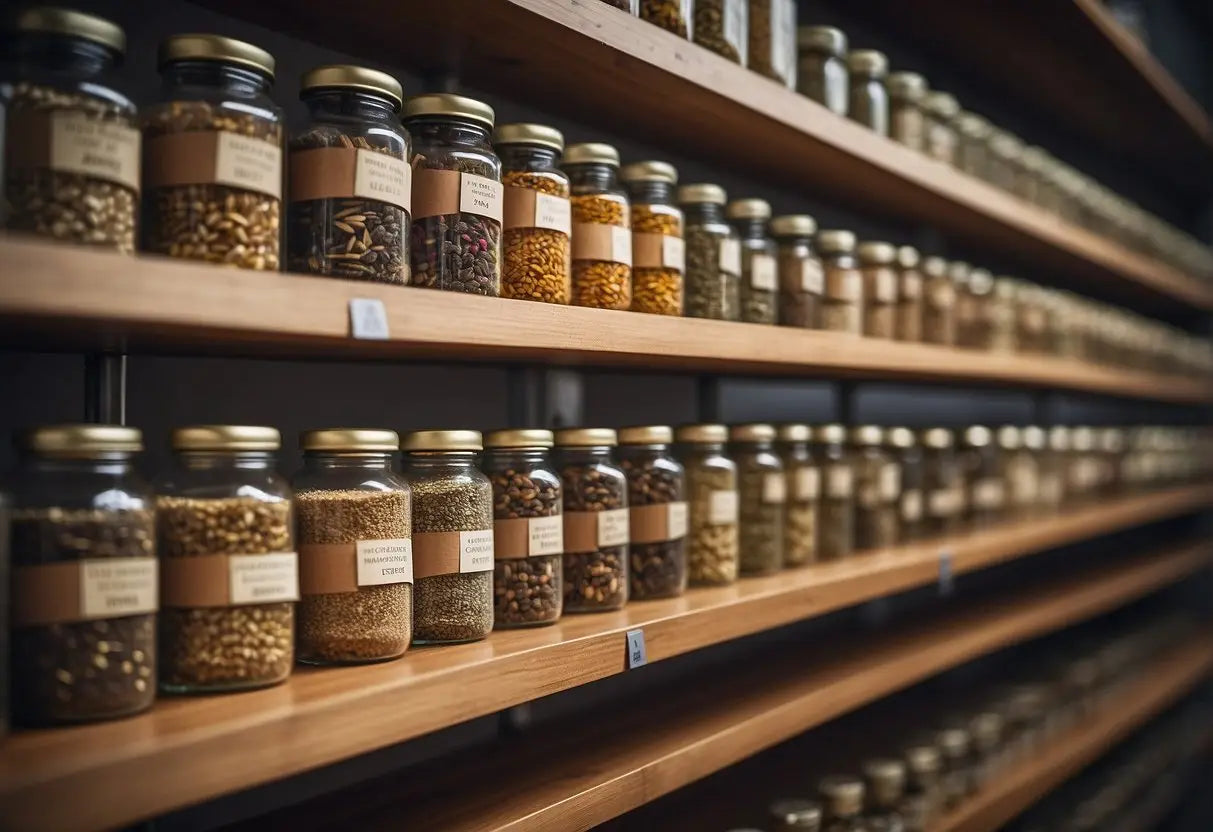
When storing loose leaf tea, ensuring it remains fresh is key. Use the right containers to protect flavor and quality.
What is the best type of container to keep loose leaf tea fresh?
To keep loose leaf tea fresh, an opaque, non-reactive container such as tin or stainless steel is ideal. These materials protect tea from air, light, and odors.
Is it necessary to use airtight containers for storing loose leaf tea?
Yes, airtight containers are crucial for maintaining the quality of loose leaf tea. They prevent exposure to air, which can accelerate degradation and loss of flavor.
Can storing loose leaf tea in the refrigerator extend its shelf life?
Storing loose leaf tea in the refrigerator can extend its shelf life, but it must be in an airtight container to prevent moisture and odor absorption, which can ruin the tea.
Are glass jars suitable for storing loose leaf tea, and how can light exposure be minimized?
Glass jars can be used if they are kept in a dark place. To minimize light exposure, store them in a dark cabinet or use a tint to block out light.
What are the considerations for storing loose leaf tea in the long term to maintain quality?
For long-term storage, keep loose leaf tea in a cool, dark place in an airtight, opaque container. Proper storage slows down the oxidation process and preserves flavor.
Is it advisable to use mason jars for loose leaf tea storage, and what precautions should be taken?
Mason jars are an option if they are kept out of light and sealed tightly. To ensure freshness, consider wrapping the jar in a cloth or storing it in a dark location.
← Older post Newer post →











